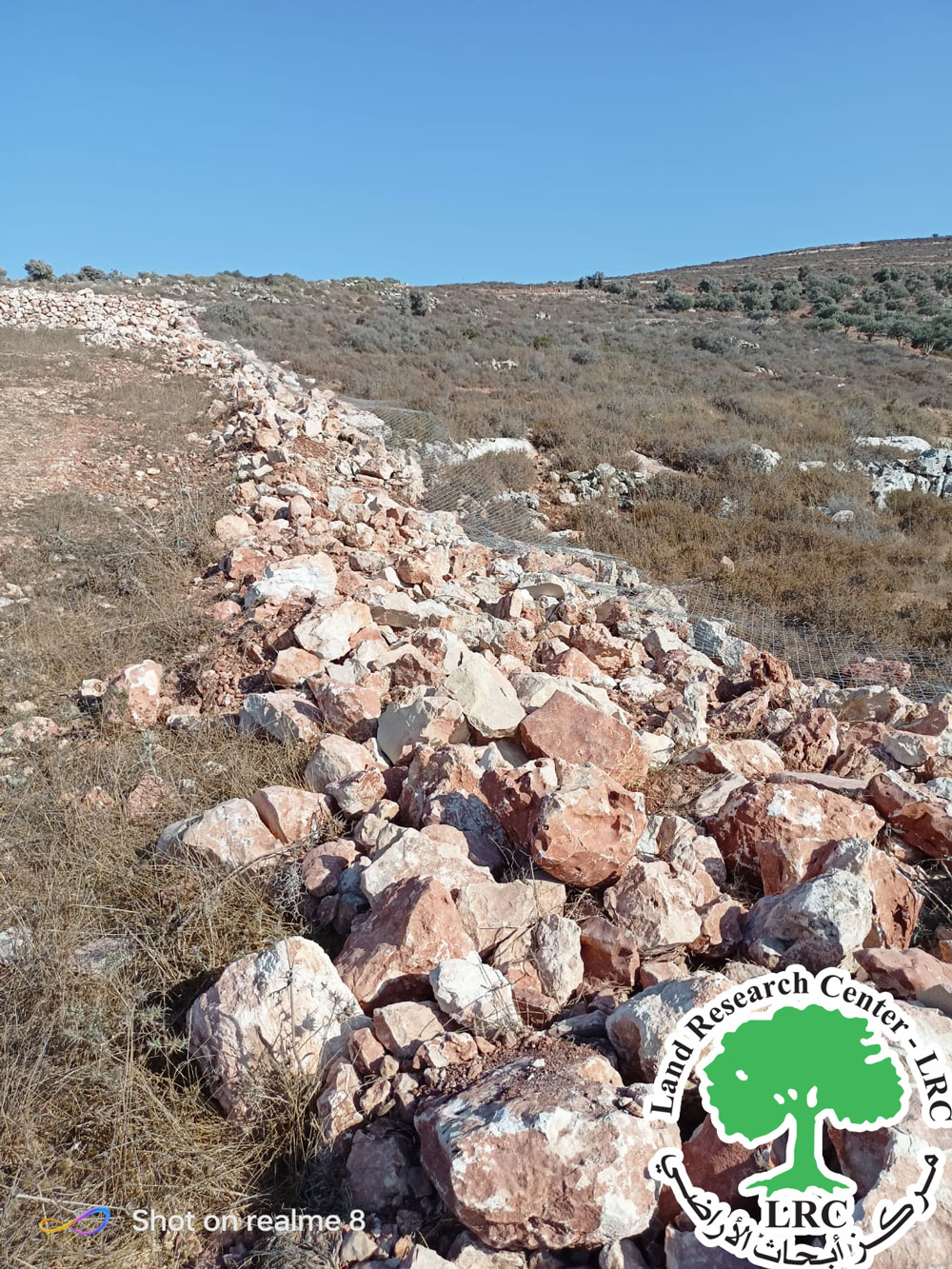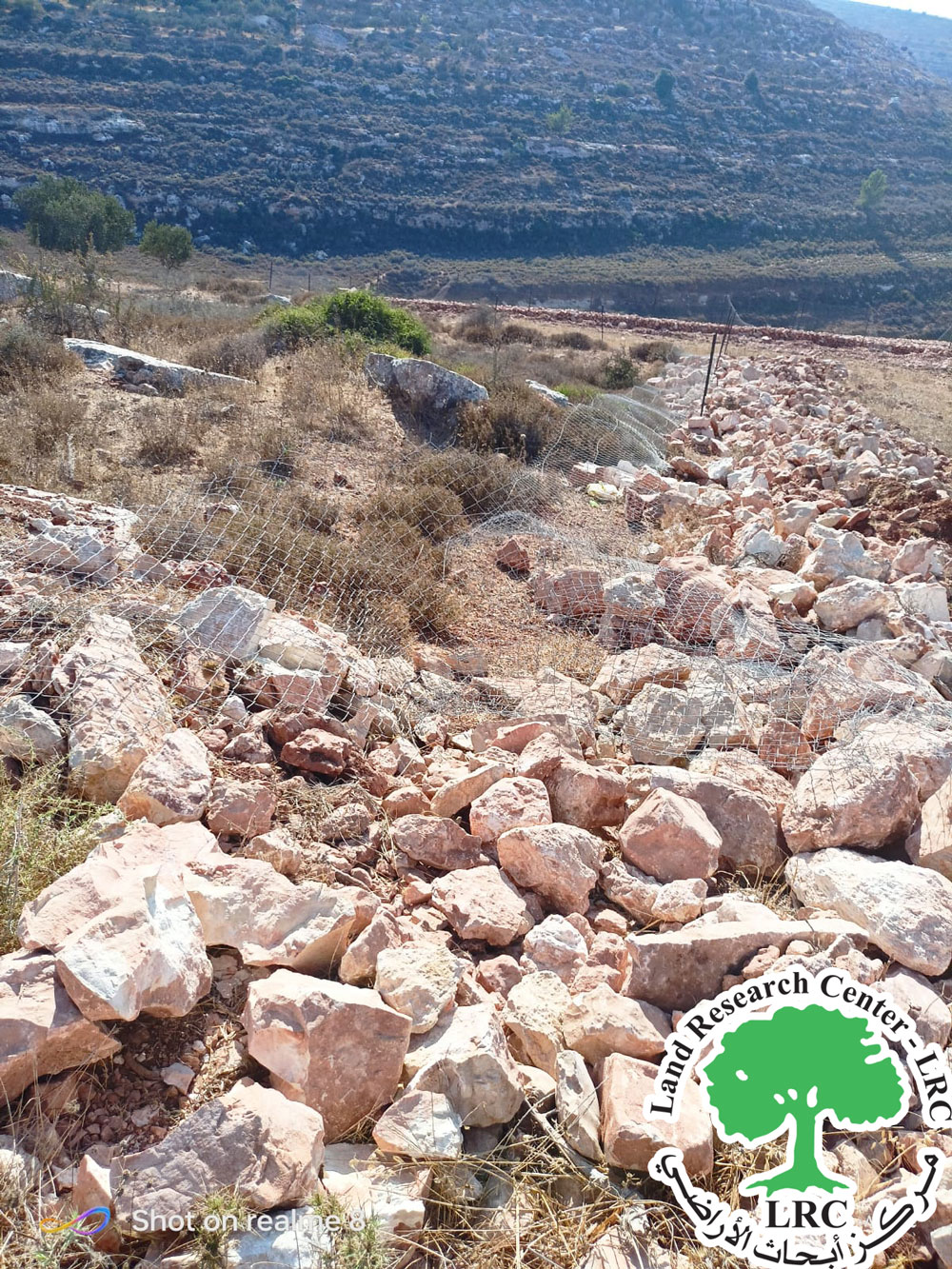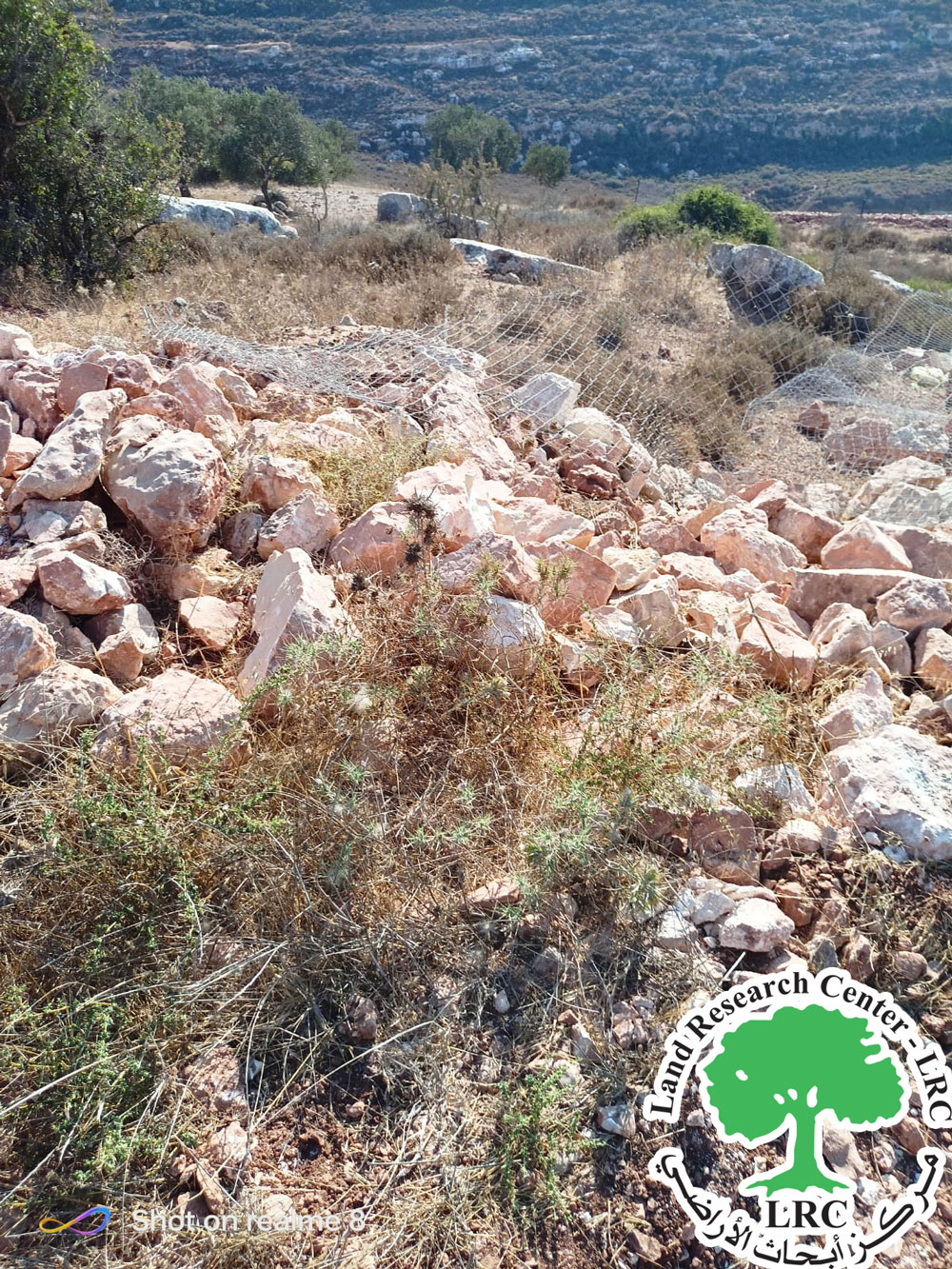Colonists Demolish Walls and Stone Fences on a Plot of Land in Beita, South of Nablus
Violation: Colonists attack agricultural lands.
Location: Beita Town/ Nablus Governorate.
Date of Violation: 12/08/2024.
Perpetrators: "Itamar" settlement.
Affected Party: Imad Hilal Bani Shamsa.
Details of the Violation:
On Monday evening, 12/8/2024, a group of colonists stormed the "Al-Sirb" area, located east of Beita, south of Nablus. It is believed the colonists came from the nearby settlement of "Itamar."
The targeted land, spanning three dunams, was in the process of being rehabilitated, with retaining walls, stone fences, and surrounding fences being built. The colonists deliberately demolished 90 meters of these walls and damaged 30 meters of a metal fence.
The land belongs to farmer Imad Hilal Bani Shamsa, who supports a family of five, including two adults and three children.
The affected farmer told the Land Research Center:
"We inherited this agricultural land from our ancestors. We regularly cultivate and care for it. About a month ago, I started rehabilitating it with the intention of planting olive trees and protecting it from colonists. I built stone walls, fences, and a surrounding barrier. But before completing the work, the colonists took advantage of the absence of any farmers and destroyed the stone walls and the metal fence, causing significant losses."
It is noted that the Al-Sirb area is regularly subjected to colonist attacks. The land, located near the "Itamar" settlement, is often used by colonists to prevent farmers from accessing and cultivating it.
The "Itamar" Settlement and its Threat to Neighboring Palestinian Villages: The "Itamar" settlement was established in the late 1970s after the so-called Israeli High Court of Justice ordered the removal of the colonial outpost on the lands of "Rujeib." It was then relocated to Mount "Bilal" in Deir al-Hatab village by helicopter.
On the day the occupation declared the establishment of the new settlement nucleus for "Itamar" in 1984, students from the Munir Institute in Jerusalem set it up, initially calling it "Tel Hayim," referencing the supposed resumption of Jewish life in the site, which they consider to hold religious significance linked to "Eliezer Itamar Pinhas" and the 70 elders in Jewish history.
Over the past 23 years, the settlement has quietly expanded, growing from a few homes into many. Today, "Itamar" stretches over the lands of several villages and towns, including (Awarta, Beit Furik, Yanun, and Rujeib), as well as the village of Aqraba. The built-up area of the settlement covers around 3,097.8 square meters, with a population of 557 settlers.





